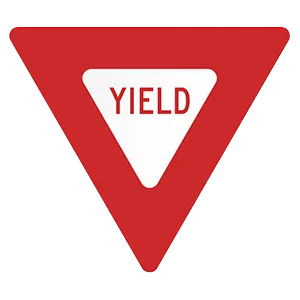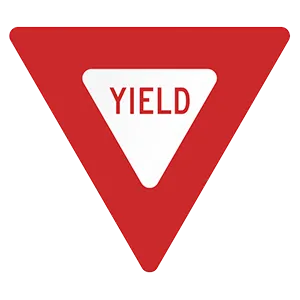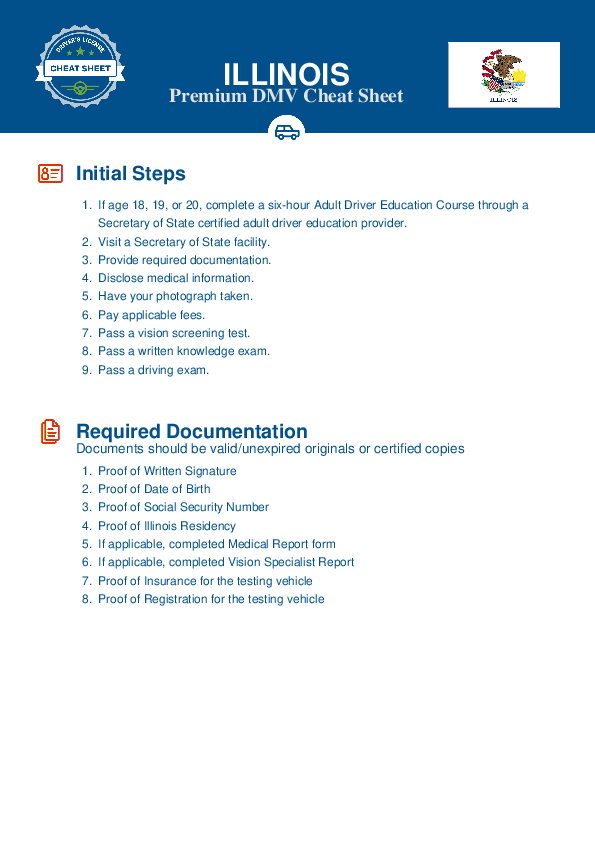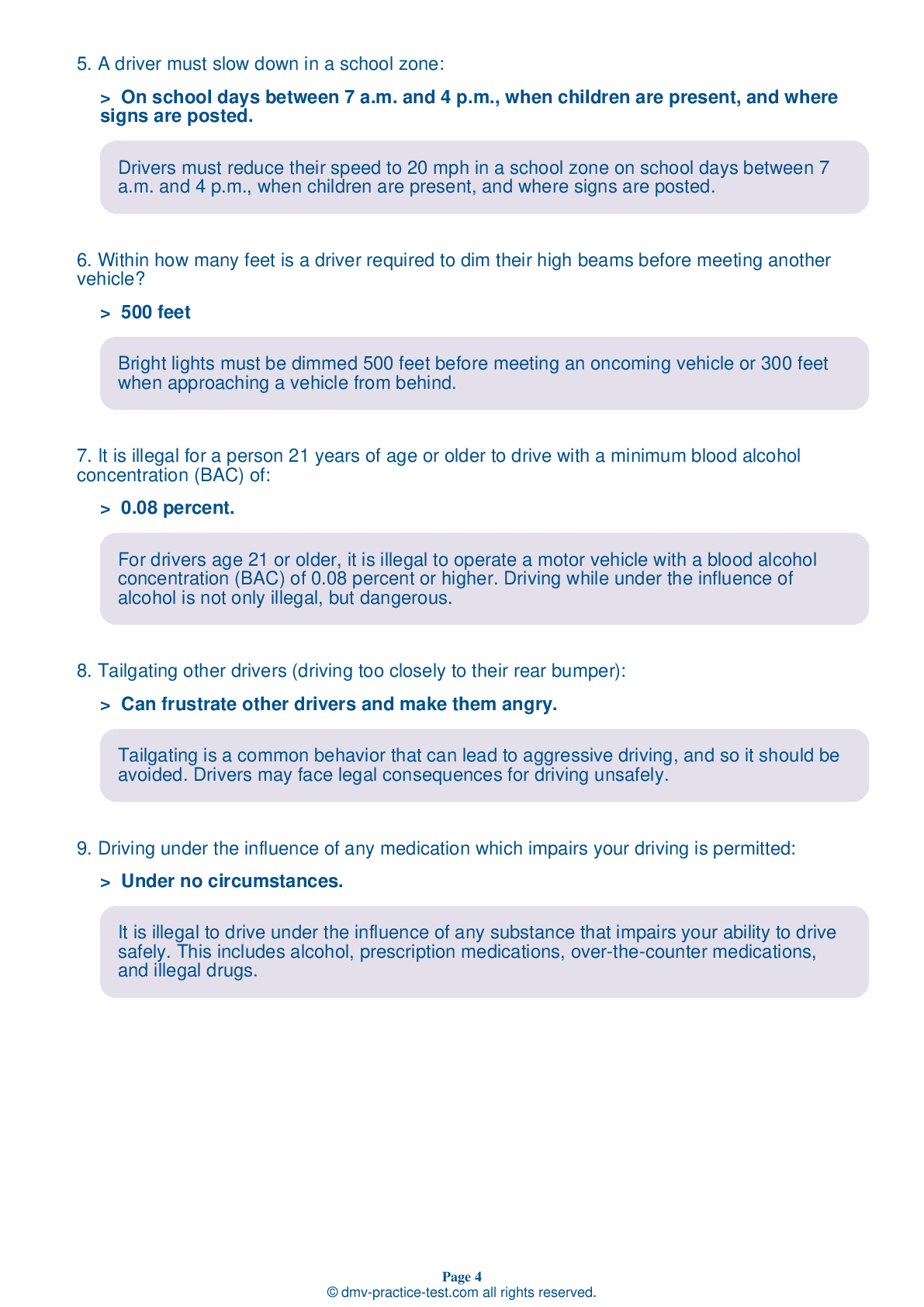FREE Illinois DMV Practice Test #7 Page 3 of 3
For January 2026, this set of Illinois DMV practise tests has been updated. It includes questions based on the most important traffic signs and rules for 2026 from the Illinois Driver Handbook. To study for the DMV driving permit test and driver's licence exam, use actual questions that are very similar (often identical!) to the DMV driving permit test and driver's licence exam.
Each question on the practise exam has a tip and explanation to help you recall the ideas. Questions about traffic rules, traffic signs, and driving statutes, as well as information from the Driver Handbook, will be included in the written portion of the official DMV test.
You must properly answer 38 of the 35 questions to receive a passing mark. To help you prepare for your Illinois instruction permit or driver's licence, take our DMV practise test.
The DMV exam is offered in a variety of languages.
Using any form of testing help will result in an automatic fail, and the DMV may take further action against your driver's licence, so avoid it.
25 . You are driving on a city street and see an emergency vehicle with flashing lights behind you. What should you do?
You must yield the right-of-way to any emergency vehicle that is using its siren and lights. Drive to the right edge of the road and stop until the emergency vehicle has passed. If you are within an intersection, drive through the intersection first and then stop.
26 . This is the shape and color of a ____ sign.

Downward-facing triangular signs mean drivers must yield. When approaching a yield sign, slow down to a speed that is reasonable for existing conditions and stop if necessary. If you must stop, do so at a marked stop line, if it exists.
27 . This sign means:

This sign indicates that the right lane ends ahead. A merging maneuver will be required for drivers in that lane.
28 . Because driving involves some risk, it is wise to continually improve your driving and observation skills.
Driving can become unsafe if drivers believe they have nothing to improve. For your safety and the safety of others, always strive to improve your driving and observation skills.
29 . This red and white sign means you should:

A three-sided yield sign indicates that you must slow down and be ready to stop, if necessary, to let any vehicle, bicyclist, or pedestrian pass before you proceed. In this case, you do not have the right-of-way.
30 . When you see this sign, you:

This sign indicates that you are approaching a railroad crossing. You must look, listen, slow down, and prepare to stop. Wait for any trains to pass before you proceed.
31 . It is necessary to use your low beams any time you are:
Use your low beams when driving in fog, snow, rain, or mist. Light from high beams will reflect off of precipitation, causing a glare and making it even more difficult to see. Some vehicles are equipped with fog lights that should be used in addition to low beam headlights.
32 . Highways and roads freeze before ramps and bridges.
Ramps and bridges are suspended in the air, causing them to become icy very quickly in cold weather. Drive with extra caution when crossing a bridge in freezing temperatures.
33 . A driver does not need to allow as much distance when following a motorcycle as when following a car.
In dry conditions, motorcycles can stop more quickly than cars. Therefore, a driver behind a motorcycle should allow at least three to four seconds of following distance so that the motorcyclist has time to maneuver in an emergency.
34 . Continuous hard braking on ice and snow often:
Continuous hard braking on snow and ice can result in the locking of the front brake, causing a loss of steering. To avoid the need for excessive braking, make sure to maintain an appropriate speed for conditions.
35 . If a driver is arrested and refuses to submit to testing, driving privileges will be suspended for only three months.
If a driver refuses to submit to chemical testing, driving privileges will be suspended for one year. If a driver under age 21 refuses to submit to testing, their driving privileges will be suspended for 6 months.
Need Car Insurance? No problem!
Compare the best rates in Illinois and find a personalized policy that meets your needs.
1. Are You Currently insured ?
2. Married ?
3. Do you own your Home?
4. Do you have more than 1 car ?
5. Have you or a Family Member Honorably Served in U.S. Military ?
6. Your Name
7. Age
8. Zip code
IMPORTANT REMINDER:Auto Insurance is Mandatory to drive in Illinois. Get covered before you hit the road to avoid any fines.
Ranked by best match



